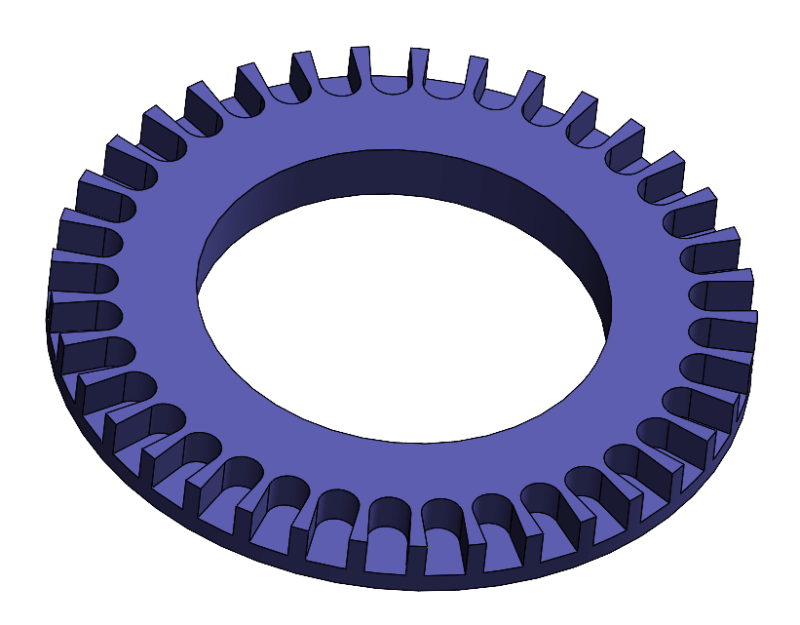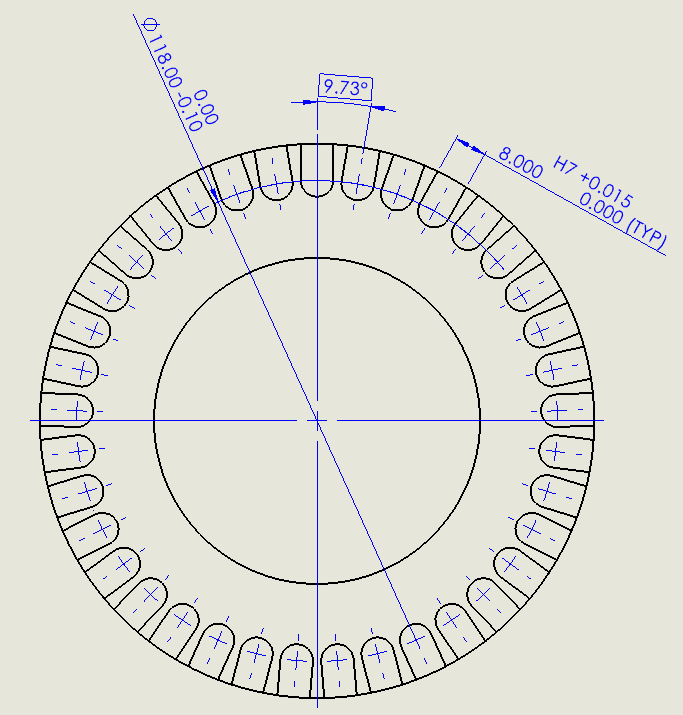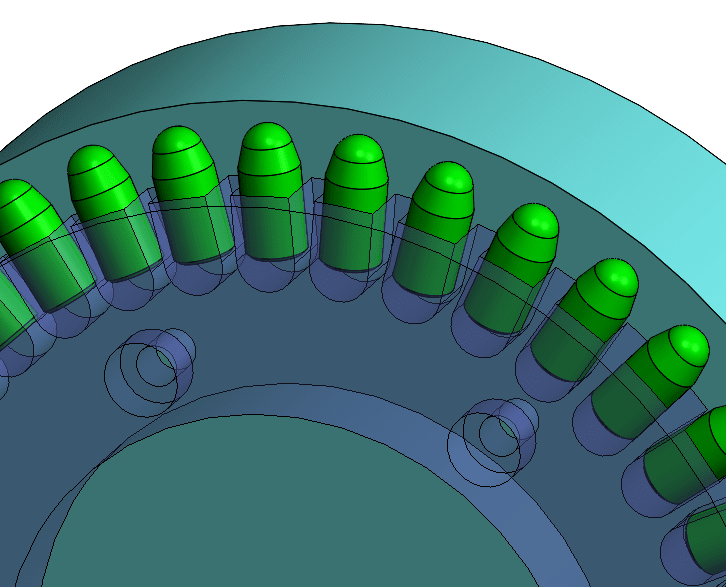newby81
Mechanical
- Apr 23, 2015
- 14
Any advise on this would be appreciated. I have a round object with a central hole. A slot is cut inwards from the outer edge. This feature is patterned around the disc (equally spaced).
The critical features are the width of the slot, the angle between slots (all instances must have identical angles)
I am not sure of the best GD&T control to use for this.
Thanks


The critical features are the width of the slot, the angle between slots (all instances must have identical angles)
I am not sure of the best GD&T control to use for this.
Thanks



